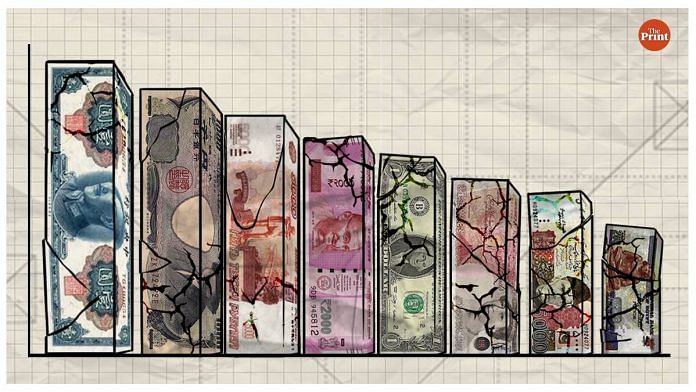Back in the 1970s, macro-economic management in the advanced economies faced a novel challenge. Inflation and unemployment, instead of moving in opposite directions through the ups and downs of the business cycle, went in the same direction.
The high unemployment reflected slow economic growth, or stagnation. The combi-term invented to describe this phenomenon was stagflation. That word is in vogue again now, after half a century, as economies confront the simultaneous prospect of low-to-zero growth and high inflation.
Economists in the 1970s devised a concept to describe what people were experiencing under stagflation: A misery index, which basically added up the rate of consumer inflation and the rate of unemployment. If one were to construct such an index today, what would it show?
To no one’s surprise, “misery” is highest in the countries known for economic mismanagement and/or congenital problems: Turkey, Argentina, South Africa. After that come two of the Brics economies (war-affected Russia and Brazil), keeping company with Pakistan and Egypt. Next comes India. Not very flattering, for sure, but the leading European economies and the US are not far behind.
Two modifications were made to the misery index. One was to add the prevailing rate of interest. That makes the picture much worse for poorly-placed countries like Turkey, Brazil, Russia, and Pakistan — since high inflation usually brings with it high interest rates. But it also opens up the misery gap between India and the wealthy countries, since these latter typically have much lower rates of interest, in line with their traditional low rates of inflation.
So far, it doesn’t look great for India, which ranks more than halfway down a list of 20 economies chosen to represent the major economies in each region.
The second modification added per capita income growth rates since these reduce economic hardship. This helps India (which in 2022 is expected to remain the fastest-growing large economy) to improve its score but not its rank, though it helps to level the ground vis-a-vis the advanced economies which usually have low rates of growth, even after adjusting for stagnant or declining population numbers. With all four factors (inflation, unemployment, interest rates, and income growth) taken into account, India remains in 12th position in our list of 20.
A good complement to the modified misery index, which basically looks at how people are faring, would be an indicator of the stability of economies in turbulent times, such as now. Back in 2013, the runaway growth of India’s twin deficits (fiscal and current accounts) led to its being listed as one of a “fragile five”.
Also Read: Corporate India has never had it so good, but under-consumption continues to undermine economy
How does India do today? The big surprise is that it does better than both the US and the UK! On the other hand, it does worse than almost all the others, barring Pakistan and Egypt. As for warring Russia, it does surprisingly well because of its large trade surplus — as do Germany and the Netherlands, for the same reason.
What about the second- and third-largest economies in the world, China and Japan? Based on their scores, both countries appear to be models of economic management. They score the best on the misery index, in its original form and with modifications, and they do better than average on the twin deficits, though it is worth noting that China’s growth rate has come down to “normal” levels (around 5 per cent) while its fiscal deficit has grown. The signs of stress are beginning to show.
Such measurements capture only part of the full reality of lived economic experience. One could therefore add other measures, like absolute income levels and poverty (since that determines one’s capacity to deal with difficult times), and also inequality.
The greater the inequality, the less is the chance of inter-generational mobility, something that is captured through yet another measurement construct — appropriately dubbed the Great Gatsby Curve — which was thought up by an economist on US President Barack Obama’s team. To the extent that India does not do well on these measurements either, the country has a lot of food for thought as it prepares to celebrate the 75th anniversary of its freedom from colonial rule.
By special arrangement with Business Standard
Also Read: For India, economic disorder is a reality to be reckoned with, but it also presents an opportunity



